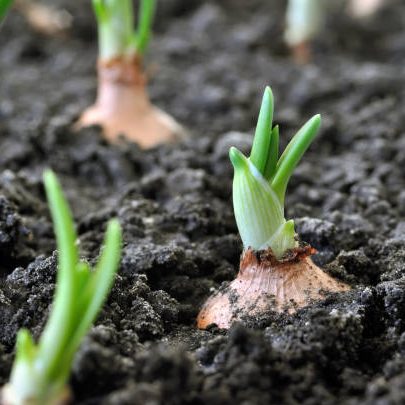
Are you in need of in-depth knowledge on onion and garlic production? If yes, we are a call away. Contact us for: Onion seedlings, Garlic seedlings, Germinated garlic cloves, Farm planning services, Soil testing, training on onion and garlic growing, Drip irrigation installation and maintenance, Agronomic support, Onion and Garlic value pack and Farm management. For free consultation, placing orders or booking a visit with an agronomist, please contact us via Call or what’s app +254703982228, Email: Info@oniondoctor.co.ke. You can also check out our social media handles for daily updates on TikTok: https://www.tiktok.com/@oniondoctorke?_t=ZM-8wmsTu0qumO&_r=1 Instagram: https://www.instagram.com/oniondoctorke?igsh=MTVoaHF3aWUydTJzaQ==Facebook:https://www.facebook.com/share/16SwgYn2dG/ Youtube:https://youtube.com/@oniondoctorke?si=u5Jnd-r0qU9UDYqL and Twitter: https://x.com/OnionDoctorKe?t=FR3JXlS_oN1vjjUgAtfyzg&s=09
Garlic farming in Kenya is rapidly gaining popularity due to its high market demand, attractive prices, and suitability to a variety of agro-climatic zones. As more farmers look to diversify and tap into profitable ventures, garlic farming in Kenya has become a lucrative option. In this guide, Onion Doctor shares expert advice to help smallholder and commercial farmers succeed in garlic cultivation.
Why Garlic Farming in Kenya is a Smart Investment
Garlic (Allium sativum) is a high-value crop used both for culinary and medicinal purposes. Kenya imports a large percentage of its garlic, especially from China and India, creating a supply gap that local farmers can capitalize on. With proper planning and good agronomic practices, farmers can earn up to KES 500,000 per acre of well-managed garlic.
Suitable Areas for Garlic Cultivation in Kenya
Garlic thrives in cool to warm climates, ideally between 10°C and 25°C, with well-drained soils. Regions like Mt. Kenya, Nakuru, Narok, Bungoma, and some parts of Western Kenya have proven ideal for growing garlic successfully.
Garlic Varieties for Kenyan Farmers
The most commonly grown garlic varieties in Kenya include:
- Softneck Garlic – Stores well and preferred for commercial farming.
- Hardneck Garlic – More flavorful but has a shorter shelf life.
Onion Doctor recommends selecting certified, disease-free cloves suited to your region for better germination and yield.
Land Preparation and Planting
Garlic requires fertile, well-drained loamy soils with a pH between 6.0 and 7.5. Before planting:
- Deep plough and harrow the land.
- Incorporate well-decomposed manure (1-2 tons per acre).
- Space garlic cloves at 15 cm apart in rows 30 cm apart.
- Plant cloves with the pointed side facing up, 2-3 cm deep.
Planting is best done at the beginning of the dry season, typically June–July in Kenya.
Irrigation and Fertilization
Consistent moisture is key, especially during bulb formation. Drip irrigation, supplied and installed by Onion Doctor, ensures efficient water use and uniform growth.
Apply fertilizers as follows:
- Basal application: DAP at planting (100 kg/acre)
- Top dressing: CAN after 30 days (100 kg/acre)
Tip: Conduct a soil test with Onion Doctor before planting to tailor your fertilization plan.
Common Pests and Diseases
Garlic is susceptible to:
- White rot
- Downy mildew
- Nematodes
Prevention and early detection are vital. Use certified planting materials and rotate crops. For safe and effective crop protection, Onion Doctor provides access to tested agrochemicals and expert advice.
Harvesting and Post-Harvest Handling
Garlic is ready for harvest 4–5 months after planting when the leaves begin to yellow and fall over. After harvesting:
- Cure garlic under shade for 2–3 weeks.
- Trim roots and leaves, then store in a dry, well-ventilated area.
Proper handling ensures a longer shelf life and better market prices.
Garlic Market Opportunities in Kenya
The demand for garlic is consistently high in:
- Urban markets
- Hotels and restaurants
- Health food stores
By working with Onion Doctor, farmers can get market linkage support and value pack solutions to improve income and reduce post-harvest losses.


